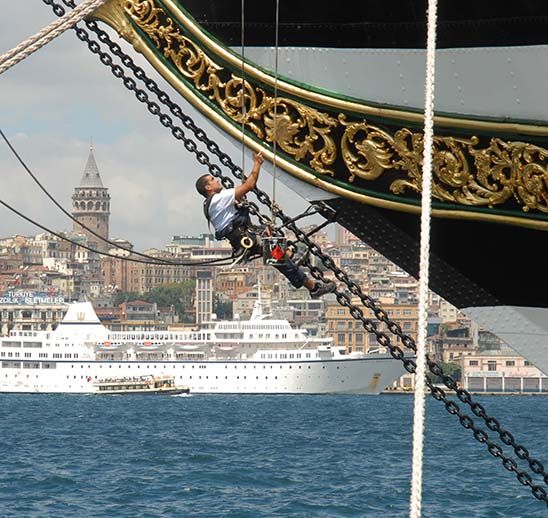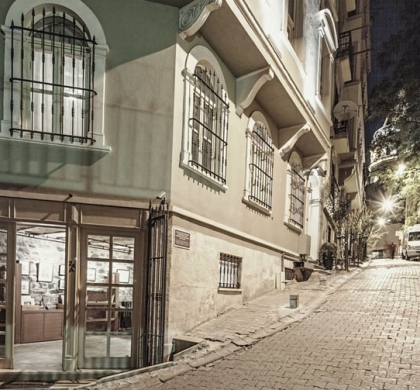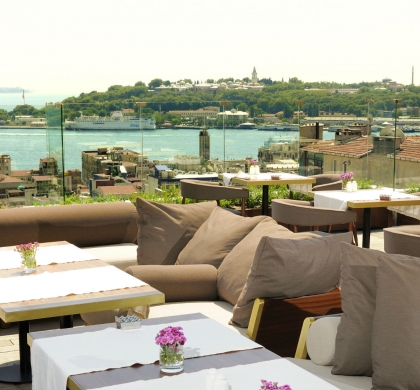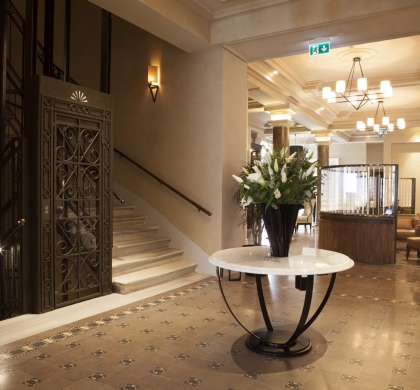Buy or gift a stand-alone digital subscription and get unlimited access to dozens of back issues for just £18.99 / $18.99 a year.
Please register at www.exacteditions.com/digital/cornucopia with your subscriber account number or contact subscriptions@cornucopia.net
Buy a digital subscription Go to the Digital Edition
Galata seen from Seraglio Point and below, from Serdar Ekrem sok., one of the quaintest streets in the neighborhood. (photograph Monica Fritz)
_145_100_s_c1.jpg)
The essential view over the Golden Horn, the Bosphorus and the Sea of Marmara and beyond. The tower was built in 1348 and marked the uppermost corner of a triangular walled city built by the Genoese colony. The balcony is open from 9am to 5pm – sufferers of vertigo be warned – and belly dancers hold court in the evening. If it is closed, the view is also very good from the Anemon Hotel’s roof terrace next door.
The 14th-century Galata Tower is one of Istanbul’s most obvious landmarks, and it symbolises the strong European influence in the city. The quarter around it, on the northern side of the Golden Horn, had been a Genoese colony, but it expanded to take in many of the Jews and most of the Christians. The foreign embassies were there, along with churches and schools, and as 19th-century reforms went ahead, Galata acquired banks, hotels, insurance offices of a type that you can see anywhere between Glasgow’s St Vincent Street and Budapest.
In the 1880s Galata and its neighbour up the hill, Pera, were huge building sites, with Art Nouveau all around, together with smart cafés and fashionable French shops where you heard innumerable languages. Some of the buildings are very good indeed. The best address in Istanbul is probably the Doğan Apartments, just down a hill from the Swedish embassy, up a hill from the Anglican church, and opposite the Deutsche Schule (1868). Itstands on land given up by the Prussian Legation and is a tall, Italian-designed, U-shaped building, looking out over the Bosphorus. The street in which it stands, Serdar-ı Ekrem, has another comparable building, once the palace of a Jewish banking family, the Camondos, which has been converted into a grand short-stay apartment-hotel. Much of Galata now looks as it used to. But it was not ever thus. Twenty years ago the place was a ruin: from the roof of the Camondo Palace, shrubs and trees were growing, and Pera was only really saved because the old foreign embassies, with their gardens, were inviolate.
The decline dated from September 6, 1955, the stupidest day in the history of the Turkish Republic. Around 5pm crowds of enraged nationalists gathered at Taksim and moved down the main street, smashing shop windows, looting goods and roughing up innocents. Their target was the Greek minority of Istanbul and the pretext was retaliation for Greek Cypriot atrocities, which were real enough.
But sinister forces were behind the Galata pogrom. The 150,000 Greeks of Istanbul had property (they accounted for half the stock exchange) and they fled over the next few years. They had been Turkey’s most obvious agents in dealing with Western Europe, and they were almost entirely loyal, with parliamentary deputies in the government party. When, to punish the malefactors, a subsequent military regime put that party’s leaders on trial, the Orthodox Patriarch spoke in their defence. These Istanbul Greeks, with a presence going back thousands of years, had nothing in common with their pain-in-the-neck Cypriot cousins. And Istanbul paid a terrible price.
The Greek buildings were abandoned, to rot for the next 40 years. They were taken over by squatters, and the quarter became notoriously dangerous. It began to recover only in 1990, when a formidable lady, Ceylan Orhun, a trained architect, spotted the potential of a splendid Italian-built block on the Tower square, and established a bridgehead. On a side wall below the building there was a sign that said it all: “Buraya çöp atan orosbu çocuğur” (sic) (“Anyone who dumps rubbish here is a son of a whore”), with “eşektir” (“…is a donkey”) crossed out. As in Hogarthian London, people just chucked the rubbish out of the window. But now the squatters are gone, and the reconstruction is spectacular.
Galata was always a place where foreign elements settled, on the other side (the meaning of Pera) of the Golden Horn. The name Galata is very old, and its origins are not clear, though common sense suggests that it has something to do with Galatia, where, in the centre of Anatolia, Celtic mercenary tribes set up a kingdom, the subjects of which were addressed by St Paul.



 Issue 66, December 2023
Turkey’s Centenary Issue
Issue 66, December 2023
Turkey’s Centenary Issue

Cornucopia works in partnership with the digital publishing platform Exact Editions to offer individual and institutional subscribers unlimited access to a searchable archive of fascinating back issues and every newly published issue. The digital edition of Cornucopia is available cross-platform on web, iOS and Android and offers a comprehensive search function, allowing the title’s cultural content to be delved into at the touch of a button.
Digital Subscription: £18.99 / $18.99 (1 year)
Subscribe now